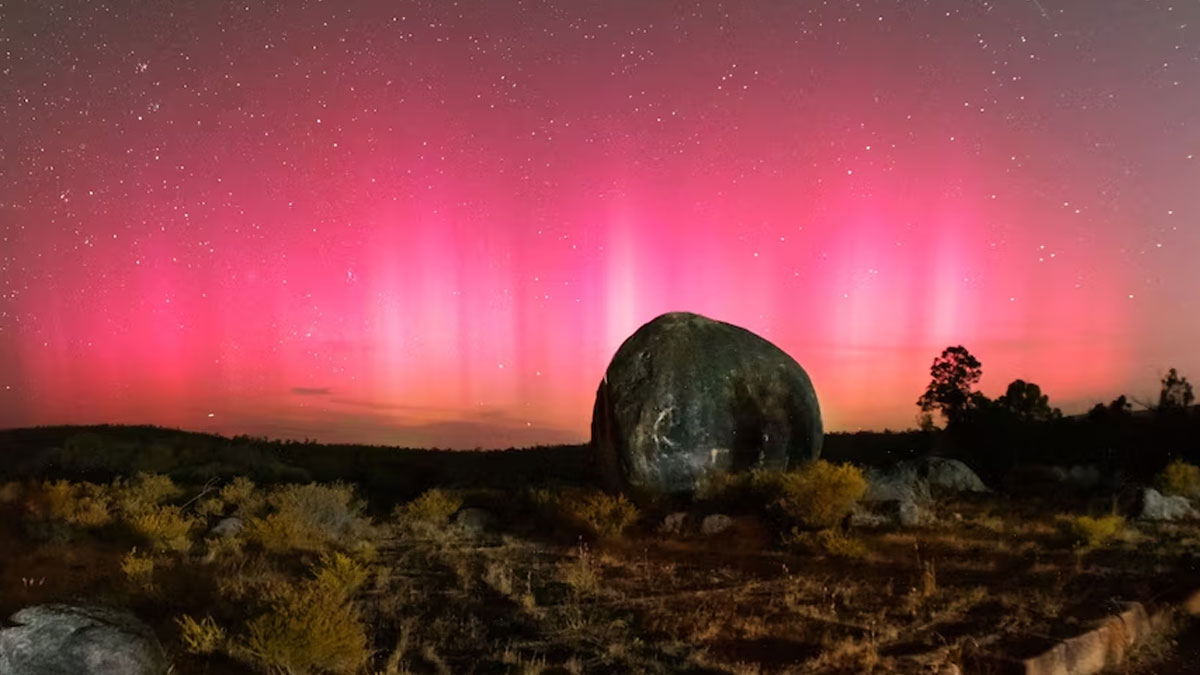
Shutterbugs and stargazers were directing their eyes and their lenses upwards at the Aurora Australis, with the iridescent sky show detected in southern and central Australia, on Friday night.
The appearance of the southern lights over widespread parts of the country, from southern WA to inland parts of New South Wales, created an opportunity for enthusiasts to capture the phenomenon on camera, with many sharing photos on social media.
"Last night was almost an all-nighter. There was another surge of activity right after dawn," author and aurora-chaser Margaret Sonnemann said.
"[It] was really a very big, wide aurora – in many cases, people in Tasmania were seeing it all the way from east to west."
Observers were treated to a stunning display which, according to the Bureau of Meteorology (BOM), "sparkled across Australian skies".
"The light show was seen widely across Victoria, Tasmania, southern Western Australia, parts of South Australia and even in far western New South Wales," the BOM said.
"It's rare to see an aurora in central inland parts, so those in New South Wales were in for a treat."
Auroras are triggered by solar flares that emit charged particles which then interact with Earth's magnetic field and collide with atoms in the atmosphere, the BOM explained.
Ms Sonnemann, who is based in Tasmania, said that "auroras are notoriously hard to predict".
"You never know what's going to happen, you never know what form you're going to see, you never know how long it's going to last," she said.
"If it's a very weak aurora and people are just beginning to look for auroras, and the sky is clear, they will see something that looks like the glow of a distant town.
"That's the first hint you get – that's called a diffuse aurora.
"If the aurora is bright enough, if it produces enough light, then we can see the colour without the aid of a camera."
While Friday's aurora was not the first this year — Victoria and, more recently, Western Australia have both been treated to similar displays — Ms Sonnemann said it was particularly impressive, and more might be on the way.
"You look south to see an aurora — it always originates at the southern magnetic pole, so we always look south, but if it's very big, it will go up very high," she said.
"Last night it actually went overhead, and that is very high.

"The Sun goes in 11- to 13-year cycles of low activity and high activity, so we're just about at the peak of high activity, and some of the best auroras are probably still yet to come."
The BOM has said there might be another chance to spot the display on Saturday night.
While social media is awash with impressive photos, Ms Sonnemann cautioned that auroras would not necessarily appear to the naked eye in the same way that they appeared on camera.
"Our eyes are not designed to see colour at night," she said.
"Many of the photographs you see will say 'straight from the camera' or 'straight from back of camera', and those you can definitely be sure will have no post-processing.
"[Some] people do some post-processing and that's an artistic choice.
"What the camera does … is — we've set the exposure from anywhere between 15 seconds, maybe up to 30 seconds — it actually takes in the colour that's there, and we're able to see what is actually there that our eyes can't pick up."
Story By: Daniel Keane and Jessica Warriner
Original Story link: https://www.abc.net.au/news/2023-12-02/aurora-australis-southern-lights-shine-above-australia/103181118
Stay tuned for the latest news on our radio stations


